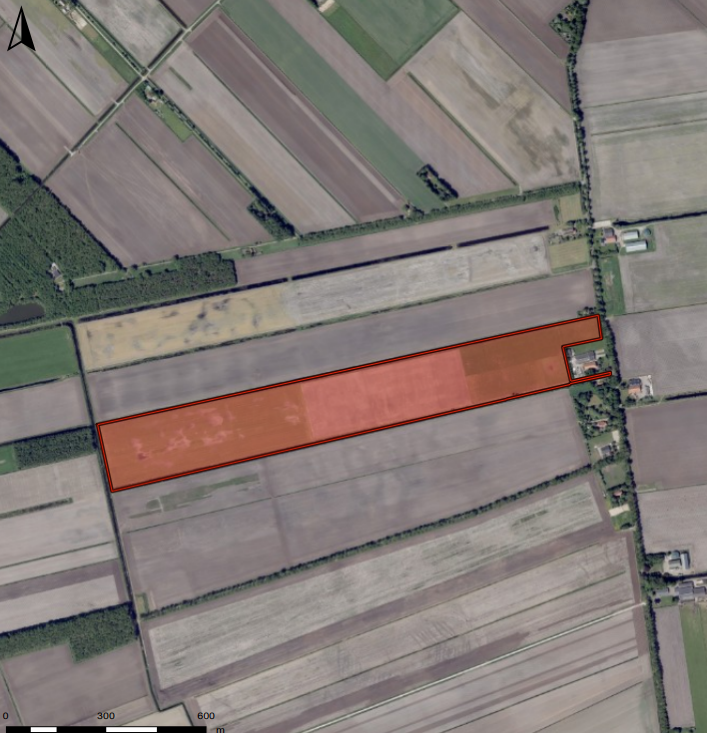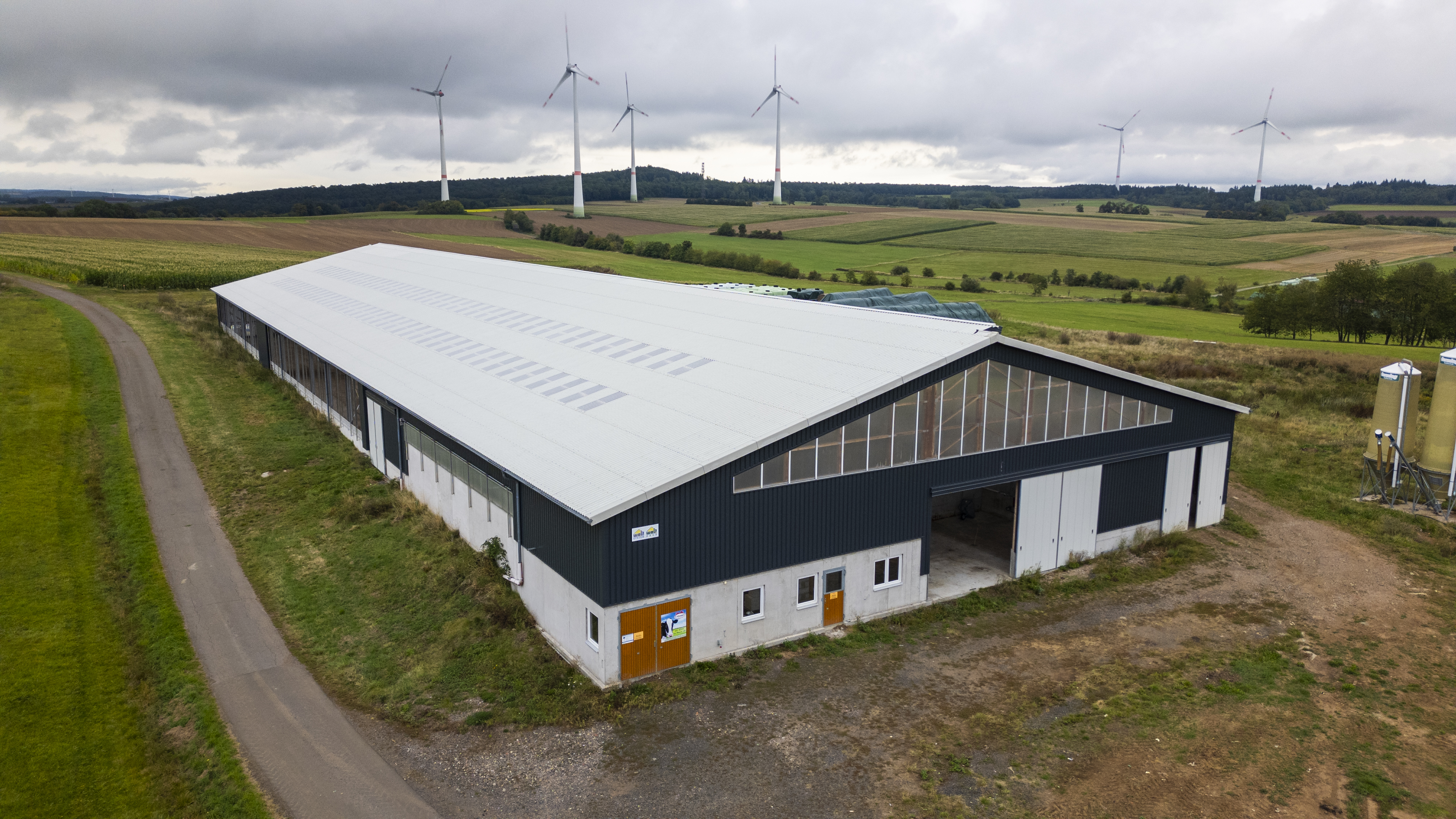General
With a population of over 17 million and an area of 41,543 km², the Netherlands has a high population density of 504 per km². About 18% of its surface area consists of water, and a significant portion of the land and population is located below sea level. The country is protected from water through a system of dikes and waterworks. Polders have been created through land reclamation. The landscape of the Netherlands is flat almost everywhere. The Dutch landscape mainly consists of cultural landscapes and managed nature reserves. Over the centuries, not only has the natural environment changed, but due to the shrinking and fragmentation of habitats and environmental pollution, both the quality and quantity of nature have deteriorated. Efforts are being made through nature policy and private initiatives to reverse this trend.
Through diversification in agriculture, entrepreneurs must also try to generate income from non-agricultural activities. These include agricultural nature and water management, agro-tourism, and care farms.
Agriculture
In the last 45 years, the number of agricultural businesses in the Netherlands has declined sharply. In 1980, there were 144,994 farms, but by 2023, only 50,600 remained. The number of people working in agriculture has also decreased significantly during this period: from 265,467 in 1980 to 196,000 in 2018.
Despite only 2.1% of Dutch people working in the agricultural sector and 2.2% of the gross domestic product coming from agriculture, the Netherlands is a major exporter of agricultural products on a global scale. Agriculture in the Netherlands utilizes 2.2 million hectares of land. In 2015, 54% of the total land area in the Netherlands was used for agriculture.
Climate
The Netherlands has a temperate maritime climate with mild winters and cool summers. The climate is influenced by the North Sea, which moderates temperatures throughout the year, with daily and annual temperature variations increasing toward the east. Temperatures in the north are generally slightly lower than in the south. The coastal provinces in the southwest, west, and north typically have milder weather in autumn and winter compared to the east and northeast. In summer, the eastern part of Brabant and the northernmost part of Limburg are the warmest areas. January is typically the coldest month in most places, while July is the warmest.
Hours of sunshine and precipitation
With approximately 1,650 hours of sunshine, the coast enjoys the most sunshine, while the Achterhoek region has the least, with around 1,500 hours. Despite its reputation as a rainy country, it rains only about 7% of the time on average. In summer, there is often a water evaporation surplus on grassland, but on average, there is an annual precipitation surplus, which is greatest on the Veluwe. The wettest areas are the Veluwe, Drenthe, and South Limburg, while the driest is central Limburg, with less than 700 mm of rainfall.
Social affairs
The government's role in agricultural diversification is varied. The development of care farms and agro-tourism proceeds with little government direction, whereas agricultural nature management is strongly directed by the government. About half of the total income from agricultural diversification comes from agricultural nature management.
There are various agricultural subsidies for farmers and agricultural businesses.
Farm takeover fund for new farmers and growers
An additional financing option is being introduced to help new farmers or growers transition to sustainable and future-proof businesses. The Loan Guarantee Scheme for Asset Strengthening Credit (BL) makes it easier for new agricultural entrepreneurs to apply for a loan based on a future-oriented business plan.
Income support through basic payment
Farmers who want to receive income support through the basic payment can apply for the basic payment annually through the combined declaration. However, they must meet certain conditions to qualify for income support. For instance, they must operate in a sustainable and socially responsible manner.
Greening payment in addition to basic payment
In addition to the basic payment, farmers can qualify for a greening payment in the following cases:
- If they grow different crops (crop diversification), which benefits biodiversity.
- If they set aside 5% of arable land as an ecological focus area. This contributes to biodiversity and environmental quality.
- If they maintain permanent grassland.
Additional payment for young farmers
Young farmers can receive an extra premium. If farmers are younger than 41 in the year of their first application, they can apply through the Netherlands Enterprise Agency (RVO.nl). The premium can be used to invest in land, buildings, machinery, and mobile installations.
Grazing animal premium
Farmers who graze their sheep or female beef cattle on land that does not qualify for the basic payment can apply apply for a grazing animal premium.
Loan guarantee for agriculture (BL)
taking out a loan. Through the BL, the government guarantees part of the farm financing. Banks are more likely to offer a loan if the government guarantees part of it.
Compensation for agricultural nature management
Farmers who manage their land in a nature-friendly way can apply for compensation. This can be done annually from November 15 to December 31, through the Agricultural Nature Management Scheme (SNL).
Some farmers can also take advantage of the Quality Impulse Scheme for Nature and Landscape (SKNL). Through this scheme, farmers can prepare their land for agricultural nature management.
Contribution premium broad weather insurance
Agricultural entrepreneurs with broad weather insurance can apply for compensation for the cost of the insurance premium through the Broad Weather Insurance premium compensation.
EU Agricultural subsidy database
Would you like to know exactly who received European agricultural subsidies? Then you can check this in a database with data on agricultural subsidies.


